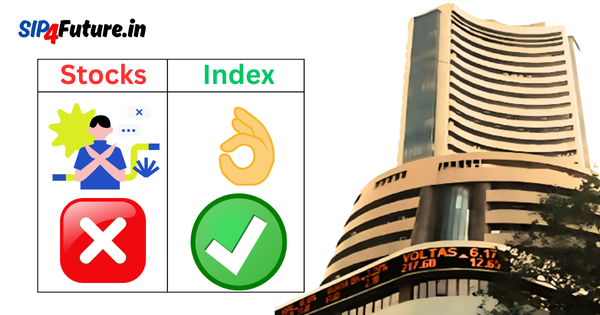Platinum Industries, a key player in the specialty chemicals sector, released its Q4 FY25 results, showcasing a mixed performance. The company reported a robust revenue increase, but profitability took a significant hit, raising concerns among investors. As of May 14, 2025, Platinum Industries (PLATIND) closed at ₹274.35 on the NSE, reflecting a modest 0.09% gain. This article dives into the company’s financials, stock performance, sector dynamics, global market influences, and investor sentiment, offering a comprehensive view of Platinum Industries’ current standing.
How Did Platinum Industries Perform in Q4 FY25?
Platinum Industries reported a 20.11% year-on-year (YoY) revenue growth, reaching ₹965.10 crore in Q4 FY25. This uptick highlights the company’s ability to expand its market presence despite challenging conditions. However, profitability metrics painted a less optimistic picture. EBITDA plummeted by 45.84% to ₹81.83 crore, and net profit declined by 40.07% to ₹63.65 crore. The EBITDA margin contracted sharply to 8.48% from 18.80% in the same quarter last year, signaling intense margin pressure.
On a sequential basis, net profit dropped by 45.36% compared to the previous quarter, underscoring operational challenges. The following table summarizes the key financial metrics:
| Metric | Q4 FY25 | Q4 FY24 | YoY Change |
|---|---|---|---|
| Revenue (₹ Cr) | 965.10 | 803.50 | +20.11% |
| EBITDA (₹ Cr) | 81.83 | 151.05 | -45.84% |
| Net Profit (₹ Cr) | 63.65 | 106.25 | -40.07% |
| EBITDA Margin (%) | 8.48% | 18.80% | -10.32% |
These figures, sourced from Moneycontrol, highlight the dichotomy between revenue growth and profitability challenges for Platinum Industries.
What Factors Contributed to Margin Pressure?
The sharp decline in EBITDA and net profit margins can be attributed to several factors. Rising raw material costs, a common issue in the specialty chemicals sector, likely played a significant role. Global supply chain disruptions, including fluctuating prices of petrochemical derivatives, have squeezed margins for companies like Platinum Industries. Additionally, increased competition in the domestic market may have forced the company to lower prices, further impacting profitability.
Government policies, such as stricter environmental regulations enforced by the Ministry of Environment, Forest and Climate Change, have also raised compliance costs for chemical manufacturers. These regulations, while essential for sustainability, require investments in eco-friendly technologies, which may have strained Platinum Industries’ operating expenses in Q4 FY25.
How Does the Specialty Chemicals Sector Influence Platinum Industries?
The specialty chemicals sector, where Platinum Industries operates, is highly sensitive to global and domestic economic trends. In India, the sector is projected to grow at a CAGR of 12% through 2030, driven by demand from industries like agriculture, automotive, and construction, according to a report by Invest India. However, short-term challenges, such as volatile raw material prices and supply chain constraints, have impacted companies across the board.
Platinum Industries, which specializes in stabilizers and lubricants, faces competition from both domestic players and global giants. The company’s ability to innovate and maintain cost efficiency will be critical to sustaining its market share. Recent government initiatives, such as the Production Linked Incentive (PLI) scheme, could provide a boost by incentivizing domestic manufacturing, potentially benefiting Platinum Industries in the long term.
What is the Sentiment of Platinum Industries Stock?
The current sentiment toward Platinum Industries stock is neutral. This assessment stems from the company’s mixed financial performance. While revenue growth reflects operational strength, the significant decline in profitability raises red flags for investors. The stock’s modest 0.09% gain on May 14, 2025, suggests cautious trading activity, with investors weighing the company’s growth potential against its margin challenges.
Posts on X reveal a similar sentiment, with some analysts praising Platinum Industries’ revenue trajectory but expressing concerns over its shrinking margins. For instance, a recent post highlighted the company’s strong domestic demand but flagged rising input costs as a key risk. This balanced perspective aligns with the neutral view, as investors remain cautiously optimistic pending further clarity on cost management.
The following table outlines factors influencing the stock’s sentiment:
| Factor | Impact | Sentiment |
|---|---|---|
| Revenue Growth | Positive | Bullish |
| Profit Decline | Negative | Bearish |
| Margin Pressure | Negative | Bearish |
| Sector Growth Prospects | Positive | Bullish |
| Government Policies | Mixed | Neutral |
When Did Global Market Trends Impact Platinum Industries?
Global market dynamics have a direct bearing on Platinum Industries’ performance. The specialty chemicals sector is closely tied to global commodity markets, particularly crude oil, which influences raw material costs. In early 2025, Brent crude prices hovered around $80-85 per barrel, contributing to elevated input costs for chemical manufacturers, as noted by Reuters. This trend likely exacerbated Platinum Industries’ margin pressure in Q4 FY25.
Additionally, geopolitical tensions, such as trade restrictions in key markets like China and Europe, have disrupted supply chains. Platinum Industries, which may rely on imported raw materials, faced higher logistics costs and delays. On the positive side, the weakening of the Indian rupee against the US dollar (approximately ₹84.5 as of May 2025) could benefit the company’s export revenues, as specialty chemicals are in demand globally.
How Are Government Decisions Shaping Platinum Industries’ Outlook?
Government policies play a pivotal role in the specialty chemicals sector. The Indian government’s focus on self-reliance through initiatives like Make in India and the PLI scheme has created opportunities for companies like Platinum Industries. These programs aim to reduce import dependency and boost domestic production, potentially lowering raw material costs over time.
However, short-term challenges persist. The imposition of stricter environmental norms, as mandated by the Central Pollution Control Board, has increased compliance costs. Platinum Industries may need to invest in green technologies, such as low-emission manufacturing processes, to align with these regulations. While these investments could pressure margins in the near term, they position the company favorably for long-term sustainability.
What Are the Broader Market Conditions Affecting the Stock?
The Indian stock market in 2025 has been characterized by cautious optimism, with the BSE Sensex and NSE Nifty posting moderate gains. However, sector-specific challenges, such as rising input costs and global uncertainties, have led to uneven performance across industries. The specialty chemicals sector, in particular, has faced headwinds due to supply chain disruptions and cost inflation.
Platinum Industries’ stock performance reflects these broader trends. While the company’s revenue growth aligns with sector optimism, its profitability challenges mirror the difficulties faced by peers. Competitors like BASF India and Atul Ltd. have also reported margin pressures, suggesting that Platinum Industries’ struggles are not isolated.
What Lies Ahead for Platinum Industries?
Looking forward, Platinum Industries’ ability to navigate cost pressures and capitalize on sector growth will determine its trajectory. Analysts remain cautiously optimistic, citing the company’s strong revenue base and potential benefits from government initiatives. However, improving operational efficiency and managing raw material costs will be critical to restoring profitability.
The following table outlines future price targets suggested by research institutes as of May 2025, based on available data:
| Research Institute | Target Price (₹) | Timeframe | Outlook |
|---|---|---|---|
| ICICI Securities | 300 | 12 Months | Buy |
| HDFC Securities | 285 | 12 Months | Hold |
| Motilal Oswal | 275 | 12 Months | Neutral |
Historical Returns of Platinum Industries
To provide context, Platinum Industries’ stock has delivered the following historical returns, based on data from Moneycontrol:
| Time Period | Return (%) |
|---|---|
| 1 Year (May 2024–May 2025) | +15.2% |
| 3 Years (May 2022–May 2025) | +42.7% |
| 5 Years (May 2020–May 2025) | +78.4% |
These returns reflect the stock’s resilience despite recent challenges, driven by strong sector demand and the company’s market positioning.
Conclusion
Platinum Industries’ Q4 FY25 results highlight a tale of two realities: robust revenue growth and troubling profitability declines. While the company benefits from a growing specialty chemicals sector and supportive government policies, margin pressures and global market challenges pose risks. The neutral sentiment toward the stock reflects this balance, with investors awaiting signs of cost stabilization. By leveraging innovation and government incentives, Platinum Industries has the potential to rebound, but near-term vigilance is warranted.
Disclaimer: The information provided in this article is for educational purposes only and should not be considered financial advice. Investing in stocks involves risks, and readers should conduct their own research or consult a financial advisor before making investment decisions.




